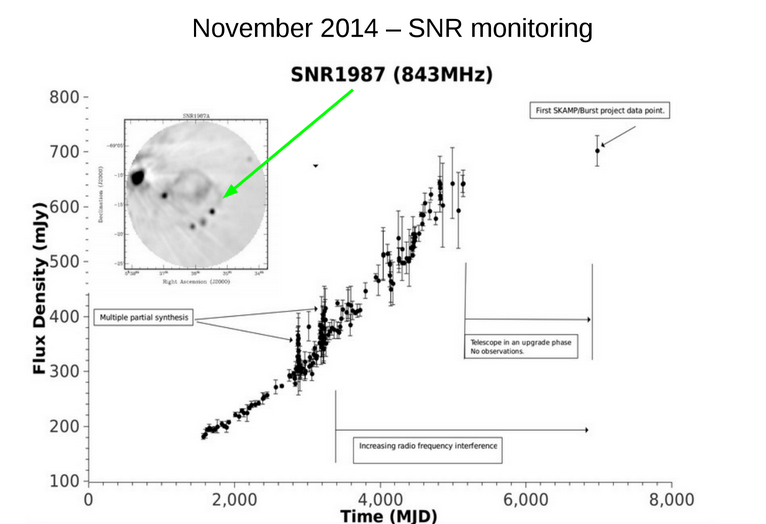Monitoring of the supernova remnant of SN1987A resumes at MOST
One of the most famous supernovae in history is SN1987A – the first naked eye supernova to explode since the invention of the telescope.
The upgrade to MOST has progressed sufficiently that we are able to begin mapping again, using the UTMOST correlator.
A 9 hour track of the supernova remnant field in the Large Magellanic Cloud, despite the low sensitivity of the telescope at an early stage in the upgrade, has allowed us to resume measuring the flux of the remnant, after a break of almost 4 years.
Long-term monitoring of the source was a regular feature of operations at Molonglo since the remnant was first detected in 1990 (Ball et al 1995).
The preliminary result is shown above, with the new data point added top right. There are indications that the flux density has turned over relative to the former rate of increase, consistent with the remnant’s behaviour at other frequencies (e.g. Staveley-Smith et al. 2014). The measurements were made by Duncan Campbell-Wilson at Molonglo.
These preliminary results with the system while still commissioning auger well for the future. Monitoring, and flux calibration, will continue over the coming months as the system approaches its final sensitivity.
